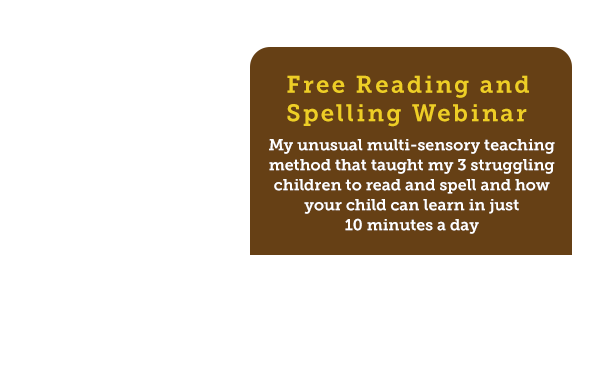It can be hard to understand why your child isn’t focusing on their reading book when you are helping them to learn and practice their reading. You could assume it’s just bad behaviour or maybe even ADHD. You’re probably asking, ‘What’s going on? Why isn’t my child attempting to read?’
So here are 10 indicators that your child or student may actually be struggling with reading and needs some additional learning support.
Indicator 1: They wriggle
They wriggle, they jiggle, and they look away. They distract you by asking questions or try to turn the page of the book.
They do anything to avoid looking at the text on the page.
Wriggling seems like a small thing, but often it’s not just wriggling; it’s jiggling, squirming, jumping, running around, making noises and movement in general.
Constant wriggling is a pretty big indicator and that’s why
it’s Number 1.
Indicator 2: Refusing to look at the book
If you don’t look at the book, then you don’t have to try to decode the words on the page.
So, a child or student who is struggling with reading will look anywhere else, but the page. Their eyes may even dart or wobble and move. The eye wobble is an interesting one. I will cover this topic in another blog, coming up soon, so look out for that one.
Indicator 3: They try to distract you
There are a huge number of questions they can ask to distract you. They may ask about; what you are wearing, what time you need to go somewhere or ask about sports or chores they could do.
Children are very good at using distraction to avoid doing something, especially reading, if they are struggling with it.
Indicator 4: They squint
Look at their eyes. They may be squinting, opening their eyes wide and then squinting again.
Indicator 5: They rub their eyes
Reading can cause some children eye strain and visual stress. This may be psychological, if they are struggling with reading, but it can also indicate a visual processing deficit.
Visual stress may make their eyes teary or watery and even irritated. This might cause them to rub their eyes.
One important tip is this:
Study them carefully.”
A child will give you an indication of what is causing them distress. They will show it physically, as they attempt the task of reading.
Indicator 6: They move the book closer or further away
They constantly move the book around.
There may be multiple reasons for this. Moving the book is a good indicator that they are struggling with reading.
Indicator 7: They ask to go to the bathroom
In a classroom setting a child may use the bathroom to get out of reading. Teachers may or may not notice this in a busy classroom, unless it is excessive.
If a child is excessively using the bathroom during class time, this may be an indicator they are struggling to read. Watch out for this one at home too.
Indicator 8: They describe the pictures on the page
This is the child that prefers to focus on the images rather than the text.
They will comment on the colours, or the characters or what’s going on in the pictures.
Maybe they just have an appreciation for Art or…
Maybe they don’t want to focus on the text on the page!
Indicator 9: They say the letter names and don’t sound them out
They won’t use the sounds, which is the basis of the decoding system, instead they say the letter names.
Each letter has a name and a sound. For example: ‘dog’. If you sound this out or decode it, it becomes “duh o- guh”. A child who is struggling may say “Dee Oh Gee” simply identifying each letter name, rather than saying the sounds it makes.
Reading is difficult, because the child first needs to identify the letter, then the sound or perhaps the blended sound the letters make and then add them all together.
A child who is struggling, may only be able to identify the letter names and not be able to say the sounds, particularly if their teacher has spent a long time covering this skill in class.
One activity you can try is to use counters to indicate the phonemes in each word. A phoneme is distinct unit of sound in words.
For example: CAT has three phonemes or sounds “cuh a- tuh”. The child would use 3 counters to indicate each of the 3 sounds above the word.
SHIP also has three phonemes “shhh i- puh“. Again, three counters would be used.
This is a visual and tactile cue and it’s fun once children develop this skill with your support. Things that make reading fun are the best. Tying emotions to learning makes it stick.
Indicator 10: They become distressed.
A child who is struggling to read, might first start with wriggling and jiggling, then distraction and asking questions. BUT…When you continue to redirect them back to the task of reading, they may start to become distressed.
“Even a 10 or 15 minute reading session, may result
in a struggling child becoming upset or angry.
They may start to cry or say they feel sick.”
These are all very obvious indicators of a child who is struggling to read for legitimate reasons. These children are not lazy or disinterested they are indicating to you, in the best way they know how, that they are struggling with the reading process.”
Here is the link to the Facebook Live stream I did on today’s topic.




















Dear Liz
So many of the behaviours that you describe are also an indication of a child having Irlen Syndrome. I wish there was more awareness about screening for Irlen Syndrome in addition to then addressing reading etc concerns.
I agree Sheriden. It should be standard practice in every school – particularly in the US. No one. seems to know about it there.
There are some really good points in this article, but number 9 makes me cringe. Consonants should never be sounded out with “uh” on the end. Duh – o- guh does not sound out dog. When we isolate the consonant sound without adding the “uh”, sounds make sense. Then when you sound out the word you get the true phonemes of the word. When my students add the “uh” sound to consonants I ask them to clip the “uh” off with imaginary scissors. It doesn’t take long for them to learn the isolated sound.
Hi Amy, we many have to agree to disagree here. I have thought long and hard about this and yes I have received criticism about it over the years, but not matter which way I sound out “puh’ and “buh” and “tuh” and all the others in this category. I come to the same concluding; the sound you make when sounding out these letters has a little mini explosion after it, hence the description ‘Plosives’. My method the Speech to Spelling Methods is all about simplifying the code for struggling children. They don’t need more rules to follow, they need a simple code to understand the 46 sounds and to cement their learning. I have some reading books coming out soon and hopefully that will help people to see where I am coming from. I never was one to follow a crowd and I don’t think that will change any time soon. Especially when children using my simple method are having so much success. Kind regards Liz D